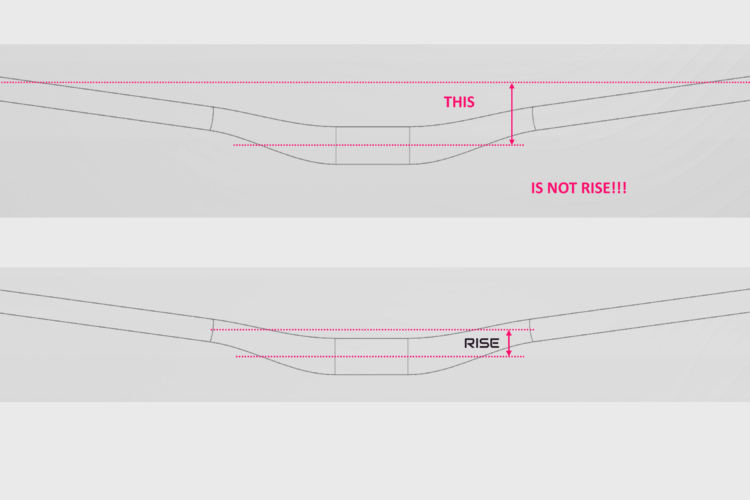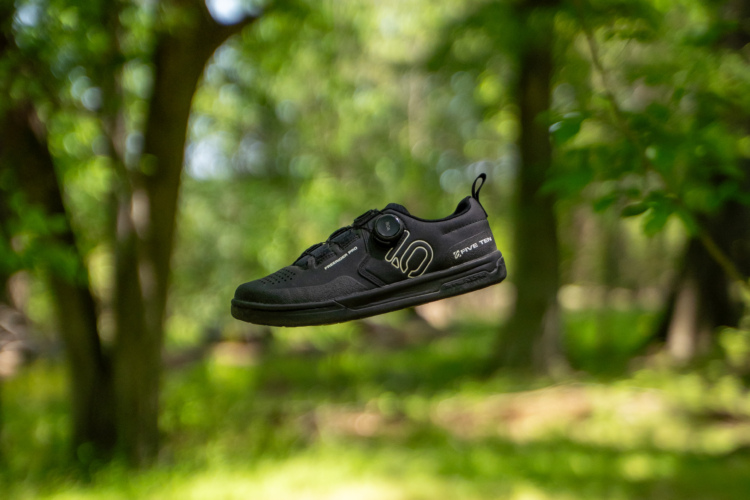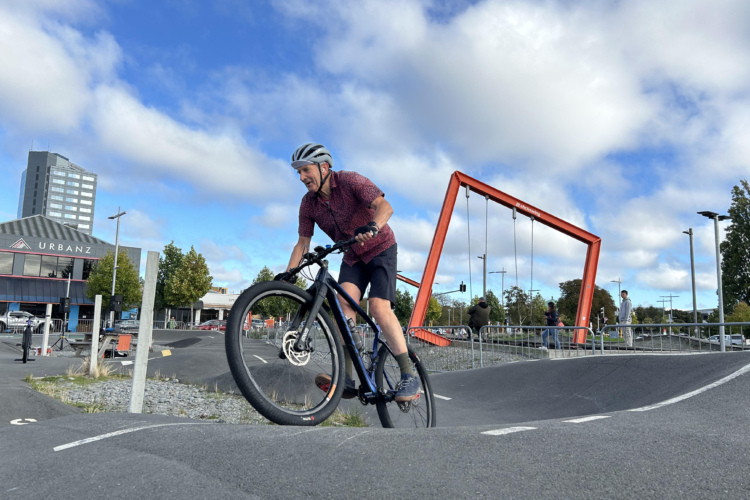The first set of “wide” mountain bike bars I tried stretched to 650mm between their clamped bar-ends, and my trail buddy said that I looked like a giraffe splayed out drinking water. Reach measurements and handlebar widths have since increased substantially, with most bars reaching a maximum span of 800 to 820mm a few years ago. No matter how tall and lanky a person is, trees will only allow so much space before they remind us who’s more resilient, so our bars are likely at their max expanse.
Test pilot profile height: 175cm (5’9″) weight: 65kg (145lb) testing zone: Bellingham, Washington
I enjoy experimenting with a few fit and function elements on my bike every season, and 2021 was the summer of chopping up handlebars to see how different widths affect the ride. I was inspired by folks like Jesse Melamed who have been outlining similar experiments on YouTube, and while Jesse is a far stronger and more capable rider than I am, I can say with certainty that there’s also merit to his body-size-specific bar cuts for average folks. Melamed and I are roughly the same height, and he rides a shorter bike than I do with narrower bars. The ripin’ Canadian also has the muscle to manage that more precise and poppy platform. Last I heard, his bars were cut to 750mm to roughly match his shoulder width.
Bike geometry and cockpit setup have a significant influence on what handlebar width works best for a given rider and bike. Longer reach measurements can start to feel stretched out, and a narrower bar will bring those appendages closer to the body to compensate somewhat. More spacers under the stem will also move the handlebar rearward a touch, as will a higher rise bar or additional back sweep. All of these incremental shifts affect how a bar span will fit and feel. I was recently riding a limo of a bike, with a 470mm reach to pair with my 175mm height, and have since moved to a frame with a 480mm horizontal line between the feet and hands. Part of making that growth feel manageable on the trail requires a narrower handlebar alongside an additional 10mm of spacers under the stem and a forward saddle position.

In addition to clearing the gaps between trees, one reason some folks may want to reduce bar width is to more easily lean their bike over and access the tires’ grippier shoulder knobs. I’ve been working to dip my bike deeper into turns this summer and I noticed early on that my 780mm handlebars made that low angle tricky in some turns. The longer the bar is, the longer your arm has to be in order to reach it at a given lean, and the wider bar made my hand feel too low for comfort. My arm also felt overextended, forcing me to straighten my elbow and drop my upper body lower than I wanted. It was time to raise the bars a tad and shave their tips a touch. Similar to a saddle that’s a smidge high, the difference between the starting point and the final length wasn’t extreme, but it did make a meaningful difference. I started with an 800mm x 31.8 PNW Range bar mounted in a 40mm stem.
In rock climbing terms, I have a slightly negative ape index, meaning that my overall height is longer than my wingspan. I wasn’t able to keep my weight balanced the way I wanted while dipping into fast turns with longer bars, so I cut the handlebar by 2.5mm per side at a time. I would then ride with the new length for a few weeks to determine if the sweet spot was locked or if more alloy needed trimming. I did eventually reach a point that felt too narrow, which happened to be 750mm. Fortunately, I had more than one handlebar to play with, so I mounted a fresh stick and started shaving anew until I arrived at the cozy resting place of 765mm. This width works well with my level of upper body strength, arm length, bike geometry, and riding style. I’m able to press the bike into turns for maximum traction while maintaining a solid ready position as I look to what’s ahead.
Another variable to consider while testing bar width is your overall upper body strength. I have what my friends call “cat muscles” that don’t gain mass no matter how many pushups or benches I press. When I reached the narrower 750mm width, the bars still felt good while pedaling, but I started to feel that I wasn’t strong enough for the reduced leverage at the helm. The wheel pulled hard against me in fast turns and compressions, and I had the sense that one ill-placed rock could rip the bars from my hands — as had happened countless times with the narrow bars on my old XC bikes. I’m surprised that the difference between that experience and a more confident one is only about 15mm, and I’m also stoked to have found the happy spot for my hands.
To wrap that into one nicely giraffe-spot pattern, it’s best to take your time and feel out handlebar width. If you experiment and cut off 2.5mm too much you can likely slide your grips out that small amount without any issues. If you cut in 5 or 10mm increments you may end up with a skinny stick that doesn’t work well for your body and bike geo. Measure twice, ride for a few weeks, and then cut once if it feels reasonable.






















12 Comments
Oct 13, 2021
Nov 19, 2021
Feb 15, 2022
Nov 19, 2021
Nov 19, 2021
Oct 7, 2021
Oct 7, 2021
Jan 1, 2022
I'm a close to zero ape index 183cm on 760mm bars. 460mm reach and 35mm stem eEnduro rider
Jan 2, 2022
Here I am with 740mm bars, thinking about switching to 720mm bars because the 720mm bars I once had felt super fun and playful
Nov 30, 2021
The guy behind Catalyst Pedals says they should put your hands at the same width they'd be doing push-ups. https://youtu.be/Ip5ZI2ulQMQ
Dec 25, 2021
Now they are the norm I’ve found many reroutes on our local trails and the 29” wheel dominance too .
But man to say the narrow 750s make it hard for you to handle your bike because your not strong enough.??? You better go eat yet Wheaties. This new wide to me bar made my bike handling so much better in the rough I was thinking of going wider .
I think my 2013 Kona AbraCadabra came with 600-650s maybe. That was a wide bar for the Enduro bikes only downhill bikes were wider .
I saw this article thinking I may go to a wider bar and may still try one . I really like this Easton Haven .
Peace Y’all
Oct 9, 2021
Anything less than 800mm with 12° backsweep, 8° upsweep.
There are some bars out there that are ideal for riding while in handcuffs...